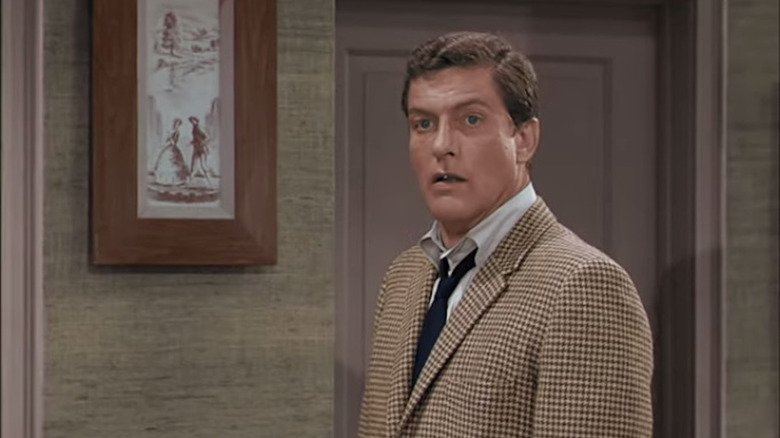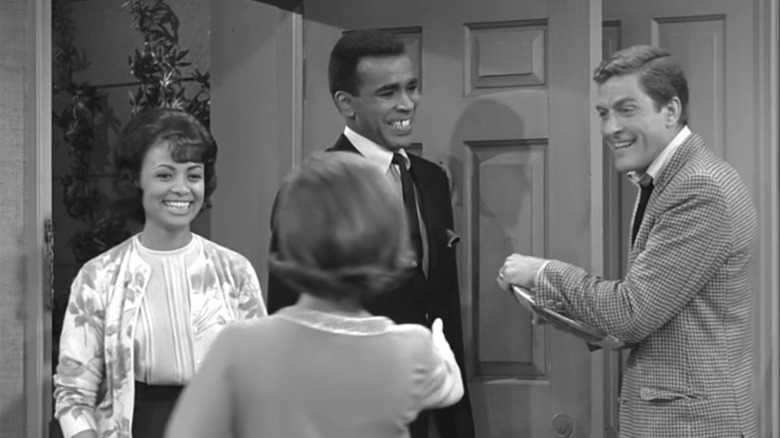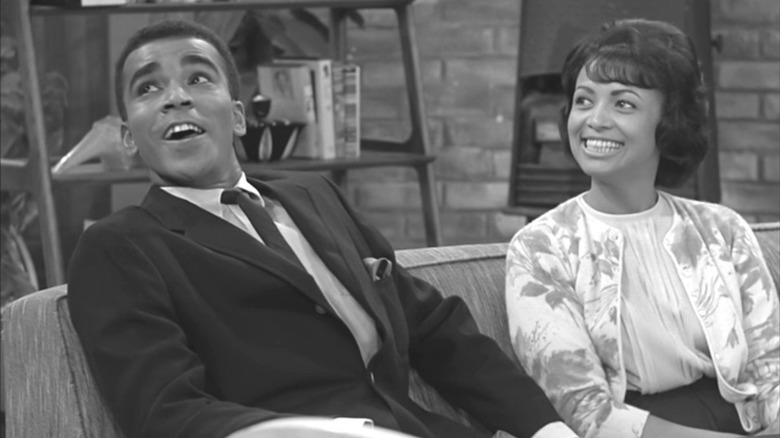The Dick Van Dyke Show Took A Risk In Season 3 That Transformed '60s TV
When "The Dick Van Dyke Show" kicked off its third season on September 25, 1963, the United States was in the midst of a societal transformation. The Civil Rights Movement's Birmingham campaign, which sought to desegregate the Alabama city's downtown businesses, was in full swing, and the images being transmitted to Americans' living rooms were ugly as hell. Birmingham's Commissioner of Public Safety Eugene "Bull" Connor countered peaceful protests with disgusting brutality. He ordered law enforcement to blast marching students with fire hoses; these children were also attacked by police dogs and the equally savage white locals, who, when they felt Connor's violent tactics weren't going far enough, bombed the Southern Christian Leadership Conference's headquarters.
And then, one week prior to the show's season debut, a pack of racists killed four little girls when they blew up the Sixteenth Street Baptist Church.
These events would play a significant role in driving national support for the movement's efforts, but at that moment, the country was on edge. So when your average American family sat down during prime time to watch one of the most popular sitcoms on television, they were more likely to be craving escape than a reminder of the racial strife roiling the nation.
What "The Dick Van Dyke Show" had planned for that late September evening wasn't contentious, but it was, given the tenor of the times, provocative.
Rob gets mixed up over a suspected hospital mix-up
The season's first episode, titled "That's My Boy," finds Van Dyke's Rob Petrie driving himself into a panic during the early days of fatherhood. This should be a joyous (if sleep-deprived) time in his life, but he has a dreadful suspicion that his wife Laura (the brilliant and ever-resourceful Mary Tyler Moore) was sent home with the wrong baby.
Rob's evidence? The hospital staff kept mixing up Laura's room with a Mrs. Peters down the hall. He uses this as a springboard to a series of specious conclusions. After a while, he is convinced they have the wrong baby, and he won't be satisfied until he talks to the Peters family. When a phone call fails to do the trick, he invites the family over to the house.
And Rob's theory explodes in one uproarious moment when he discovers that the Peters are African Americans.
How did this gag play in 1963, and was it well received by mainstream American viewers?
They were worried that it might be racist
According to a 2013 New York Times article on "That's My Boy," some members of the cast were anxious about how the studio audience would react when the Peters walked through the Petries' front door. The episode is available on YouTube, and the reaction is utterly fascinating.
Had this been an "All in the Family" gag a decade later, the Peters' entrance would've immediately sent the audience into hysterics. In 1963 on "The Dick Van Dyke Show," there's an awkward silence. Greg Morris, who played Mr. Peters, defuses the tension a tad by corpsing, but the audience's laughter is slow to build. It isn't until Laura — who thought Rob's notion was ridiculous from the start — breaks into a big smile and invites Mrs. Peters into the living room that the audience both laughs and applauds.
This episode wasn't exactly a balm to the country's tortured soul, but it did offer the too-rare sight of unconditional racial harmony. The only awkwardness is Rob discovering he's been an over-anxious fool all this time.
According to series creator Carl Reiner, the only people who voiced an objection to the episode were the network's standards-and-practices watchdogs. "They were worried that it might be racist, that Black people would be upset," Reiner told the Times. "That was an unusual thing for them to be worried about."


